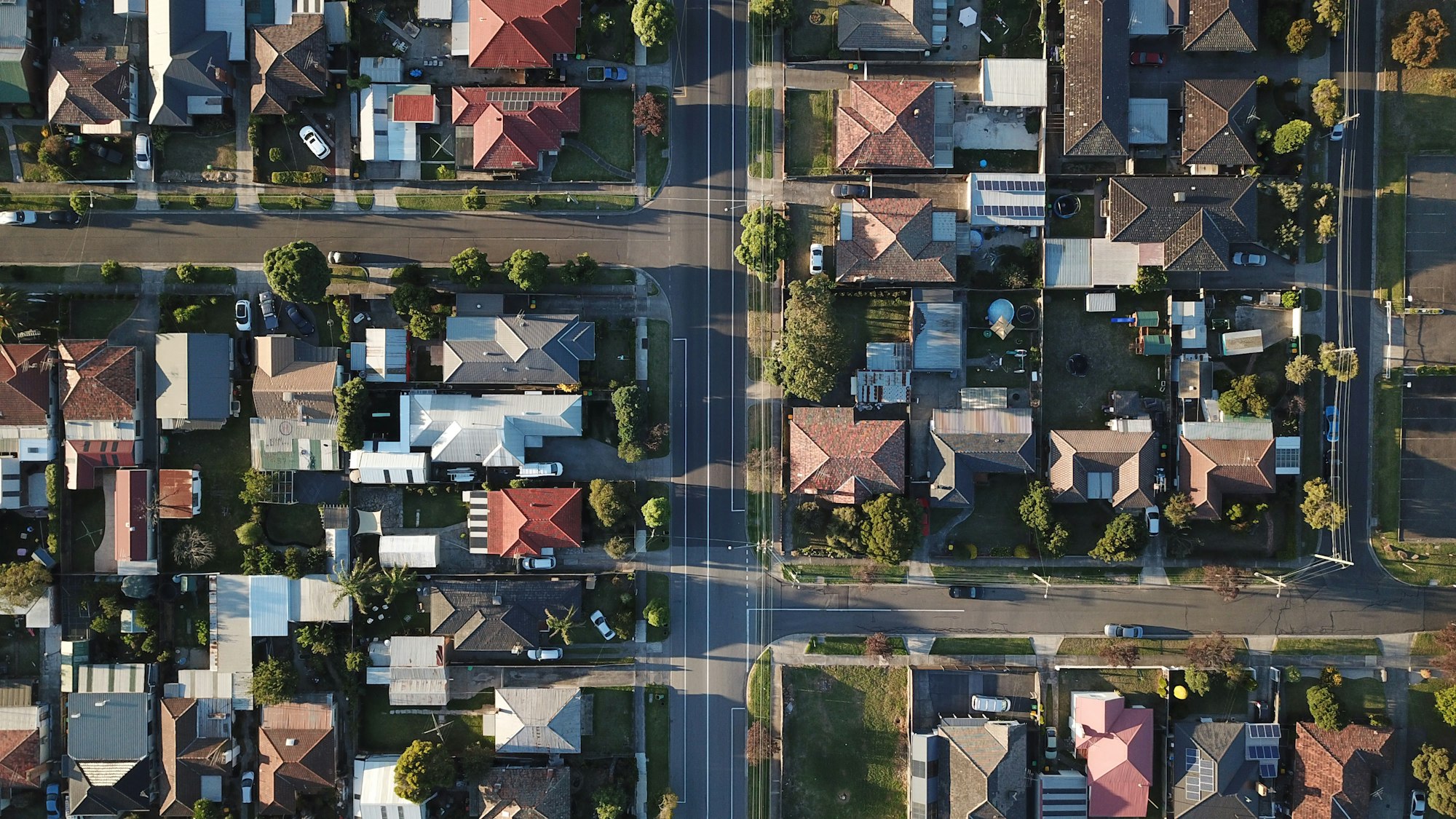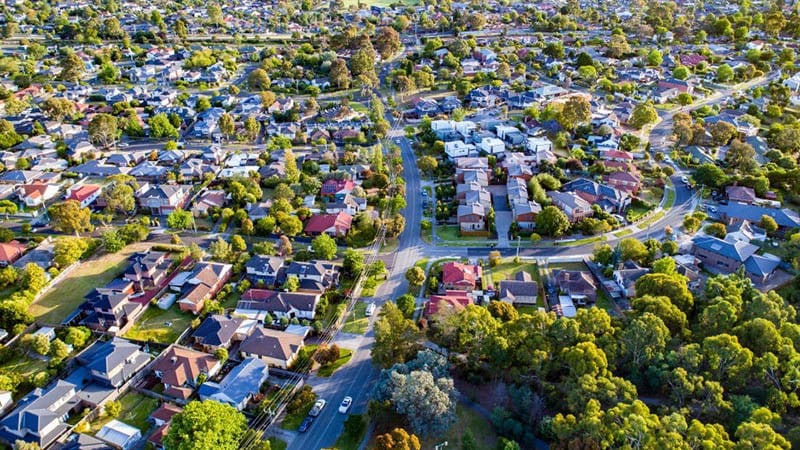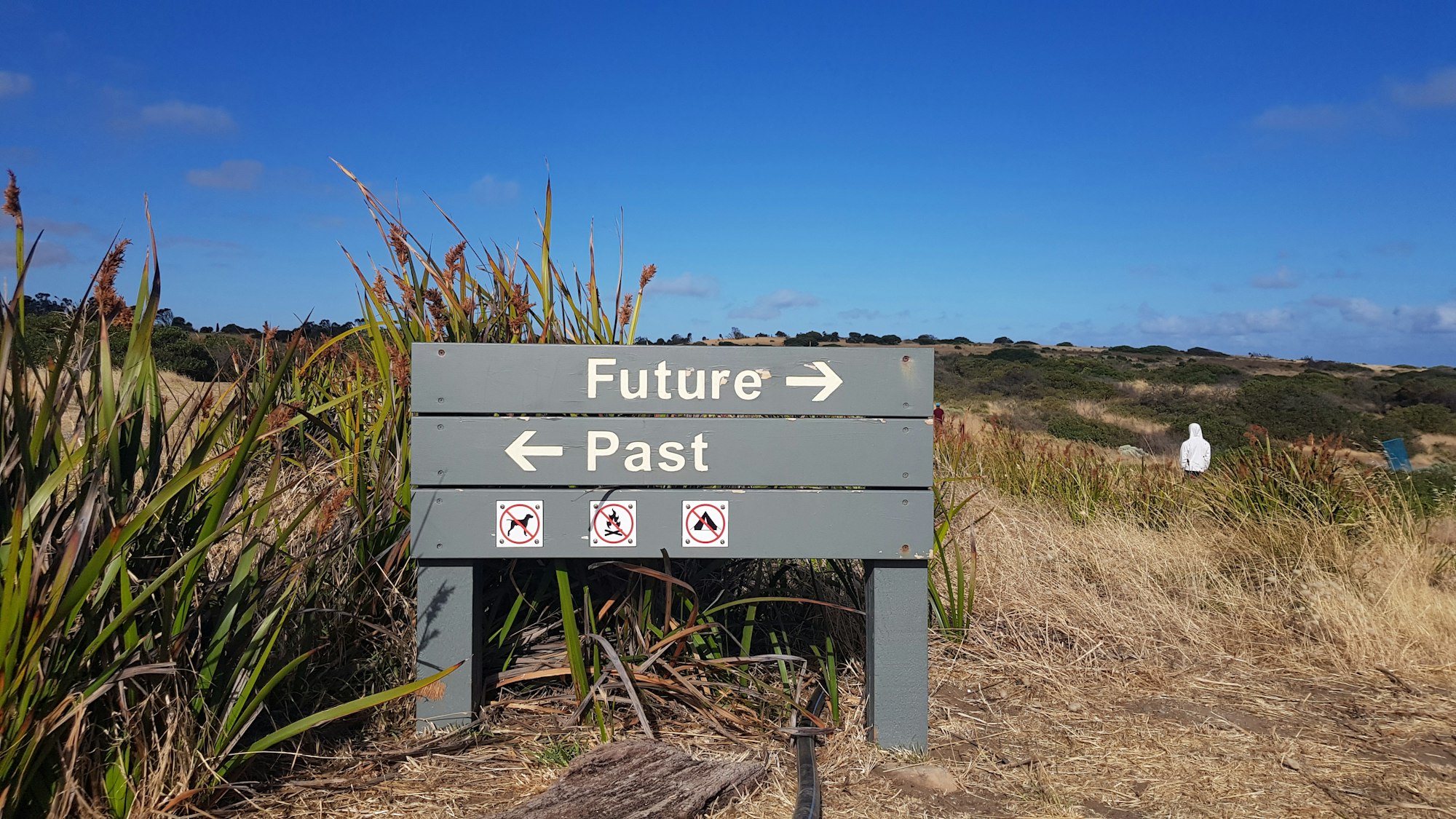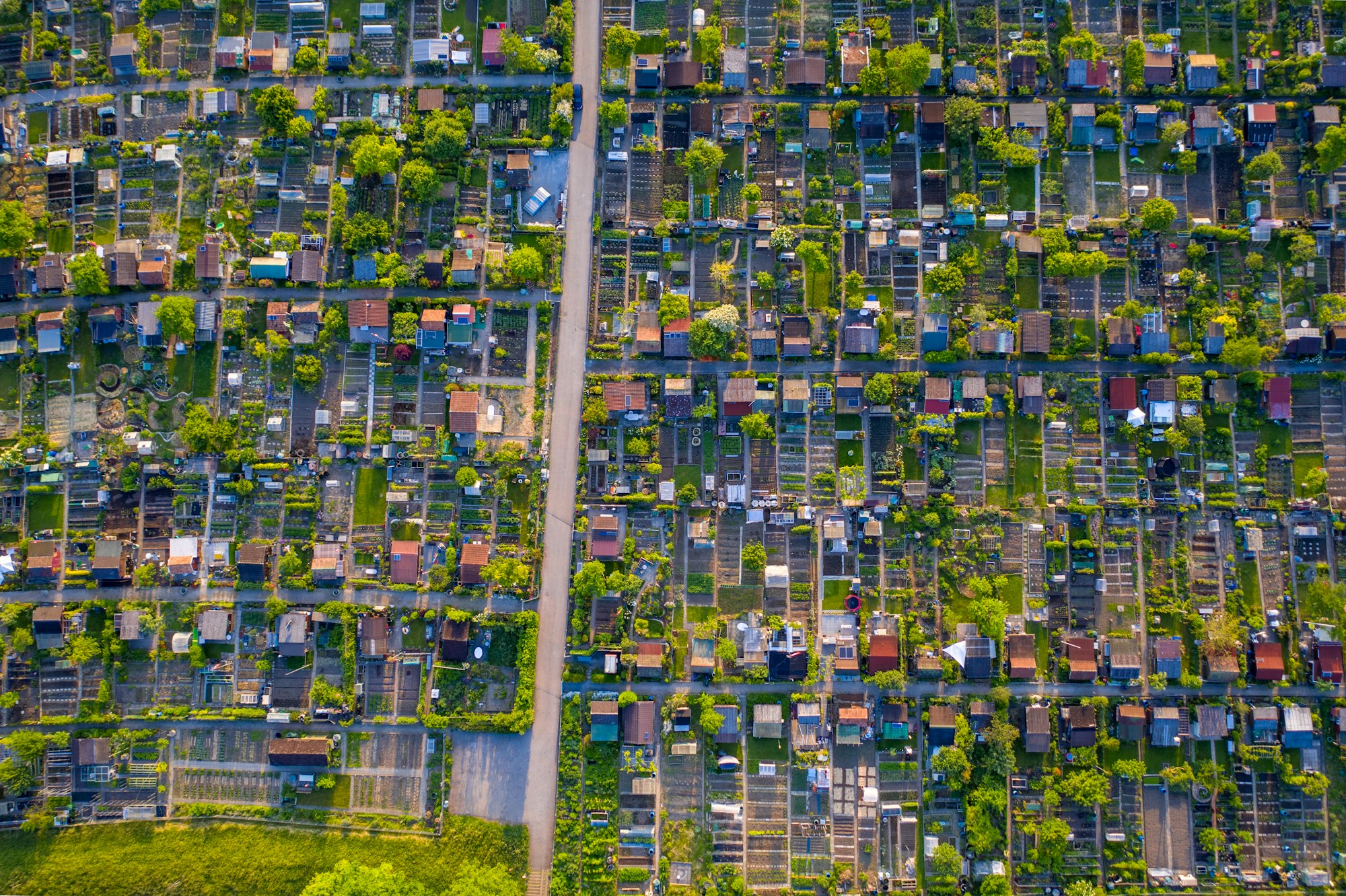Introduction
Australia is in the grips of a housing affordability crisis. Rents have skyrocketed in recent years, with the national median rent reaching around $550 per week – up nearly 15% in just one year.
Vacancy rates have sunk to record lows (around 1% nationally), making it incredibly hard for renters to find a home. At the same time, almost 190,000 households are stuck on social housing waiting lists, and over half of low-income renters are in housing stress (paying more than 30% of their income on rent).
These figures paint a shitty picture: despite various policies and incentives, the private market alone hasn’t provided enough affordable, secure housing for Australians.
In this blog post we outline a new, solution-focused proposal: the Australian government should directly build, own, and manage rental housing at a large scale – essentially becoming the country’s biggest landlord.
Instead of relying on private developers and half-measures like tax breaks or grants, the government can leverage its unique position (as major landowner and policymaker) to lead a massive home-building program.
We’ll look at how this approach could stabilise rents, improve housing quality, create jobs, and tackle inequality – all while being financially viable through innovative funding like public REITs or housing bonds. The goal is to show that a constructive, government-led strategy can address the housing crisis head-on, for the benefit of both renters and homeowners alike.
The Housing Crisis and Why Market Incentives Aren’t Enough
For decades, Australia has tried to encourage the private sector to supply affordable housing – yet the results have been disappointing. Generous tax concessions and subsidies were supposed to boost rental supply, but housing costs have only climbed. Policies like negative gearing (which lets investors deduct rental losses from taxable income) and capital gains tax discounts were intended to incentivise investment in housing.
Instead, these measures largely fuelled investor demand without significantly increasing the number of affordable homes. In fact, the Parliamentary Budget Office estimates that negative gearing and related tax perks will cost the federal budget over $16 billion per year by 2029-30 (SOURCE). That’s a massive public expenditure not directly creating new houses.
Meanwhile, programs such as first-home buyer grants or developer incentives have had only a limited effect on affordability, often causing price inflation or project delays rather than fundamental change.
The core issue is that private developers and landlords prioritise profit, not affordability. They tend to build housing that maximises return on investment – often expensive homes or luxury apartments – because there’s more money in it.
Affordable rental projects, even with subsidies, are seen as less attractive. This is why relying on the market alone has left us with chronic undersupply in the low- to mid-priced rental sector. For example, despite years of tax breaks aimed at landlords, rental vacancies in major cities fell to crisis levels and rents surged, as noted above.
The trickle of affordable dwellings produced by schemes like the former National Rental Affordability Scheme (NRAS) or various state incentives hasn’t kept pace with the huge demand. At the same time, social housing stock (public and community housing) has stagnated at around 3-4% of total dwellings – far below what’s needed.
Over half of low-income renters now spend over 30% of income on housing, and one in five spend more than half – a situation experts warn is “locking people out and driving inequality.”
It’s clear that incremental, market-led approaches are failing to ensure secure, affordable homes for Australians. The housing crisis isn’t going to solve itself with minor tweaks.
This is where the government must step in differently – not just as a regulator or funder at arm’s length, but as an active builder and landlord. By directly creating housing stock, the government can fill the gap that private interests won’t.
Rather than pouring more money into incentives that delay action, those funds could be invested in actually building homes. In the sections below, we’ll argue that a government-led housing program isn’t radical thinking; it’s a practical solution backed by historical precedent and successful examples abroad.
It plays to the strengths of the public sector and can deliver what the market has not: homes that people can afford to live in, with reasonable rent and dignified conditions.
Government’s Unique Advantage: Land Ownership and Policy Levers
One major reason the Australian government (and state governments) is well positioned to take the lead in housing development is the vast stock of land and resources already under public control.
Governments own surplus land in the form of unused state-owned parcels, former school sites, decommissioned facilities, and so on – often in areas that could be repurposed for housing. For instance, a study in Western Australia identified 30 government-owned sites (about 62 hectares) that were sitting idle or earmarked for sale, which could instead be developed into an estimated 864 new affordable and social.
This illustrates a broader point: instead of selling off public land to the highest bidder (only to see luxury homes or offices built), authorities could retain the land and use it for the public good by constructing affordable housing.
Land cost is a huge component of housing prices, so building on land the government already owns or can acquire cheaply makes the overall development far more viable. Essentially, the government can contribute land equity to housing projects, reducing costs and ensuring long-term control over the property.
Beyond land, the government controls the policy levers and planning approvals that can make or break housing projects. This means public-led developments can be fast-tracked and scaled efficiently.
A government housing developer could streamline zoning changes, bypass red tape, or use “call-in” powers for projects of state significance to get construction moving quickly. In Victoria’s recent Big Housing Build program, some projects on public land were designated “fast start” sites – leveraging public ownership to accelerate construction of over 1,000 social and affordable homes.
This kind of speed is only possible when the developer and the regulator are essentially on the same team (the public sector), focused on social outcomes rather than navigating competing private interests. Moreover, the government can plan housing in concert with infrastructure and services – for example, choosing sites near transport, jobs, and schools – because it has the bird’s-eye view of urban planning. Instead of reacting to where private developers choose to build, the public sector can proactively decide where housing is most needed and ensure the supporting infrastructure is in place.
Finally, if the government becomes the landlord, it has the ultimate policy lever: the ability to set rent levels and tenancy terms in those properties by decree, rather than hoping the market will be kind. We’ll discuss rent in the next section, but it’s worth noting here as a “lever” unique to public ownership. All these advantages boil down to this: the public sector has tools to deliver housing at scale that no private developer has on their own – from land supply to streamlined approvals to regulatory power.
By managing these assets, the government can undertake a housing construction effort of unprecedented scale, treating it as essential infrastructure (much like roads, schools, or hospitals). Given the urgency of the crisis, it makes sense to use every advantage at our disposal to boost housing supply, rather than leaving prime land underutilised or stuck in bureaucratic limbo.
Building Homes at Scale to Fix Rents and Increase Affordability
If the government takes on the role of a major home builder and landlord, one immediate benefit is the power to stabilise rents and keep them affordable. Unlike private landlords, a government-run housing provider isn’t aiming to maximise profit; it can choose to charge rents based on social objectives. For example, public housing traditionally sets rent as a proportion of the tenant’s income (often around 25% of income for low-income households).
Expanding government-owned rentals means expanding the portion of housing stock where rent is not subject to runaway market forces. Imagine a scenario where tens of thousands of new government-built homes are rented out at fair, fixed rates – this would provide relief to countless families and also indirectly put downward pressure on private market rents (by increasing overall supply and offering a low-cost alternative).
We can look at international models for inspiration: Vienna, Austria, has kept a huge stock of city-owned apartments with rent control, to the point that about 60% of Vienna’s residents live in housing with reduced rents and secure tenures This public dominance in the rental market has helped Vienna remain one of the world’s most liveable cities.
In Australia, a bold proposal along these lines has already been floated. In 2024, the Australian Greens party proposed creating a national public housing developer tasked with building 610,000 new homes (both rentals and homes for sale) over a decade. Under that plan, rents would be capped at 25% of the national median household income (and even lower for the neediest 20% of tenants).
While that proposal hasn’t been adopted (with many greens losing office in the recent election), it shows the potential: capping rents in government-built housing could save the average renter thousands of dollars a year. (Indeed, the Greens estimated an average renter would save about $5,200 annually in rent under their scheme.)
The key point is that with government as landlord, affordability can be engineered into the system. Rent-setting can be based on costs and fairness, not what the market will bear. Long-term leases or even open-ended tenures could give renters more security and peace of mind, reducing the churn and stress many face in the private rental market.
Scaling up social and affordable housing stock also means fewer people competing for the limited private rentals, easing pressure on everyone. Homeowners benefit too: a society with stable housing means less homelessness and disadvantage in the community, and potentially a more stable property market without extreme booms and busts.
Critics might worry that government intervention of this scale would “distort” the market, but from another perspective, it corrects a distortion that already exists – a market failure where essential housing isn’t being provided to those who need it.
By aiming for, say, public or non-profit ownership of 10% or more of all housing (up from around 4% today), Australia could emulate countries that treat housing as a social infrastructure.
This would directly reduce inequality: low- and middle-income families could find decent homes at reasonable rent, freeing up income for other needs and reducing financial stress. Instead of waiting and hoping for trickle-down benefits from private development, a public-led build-to-rent program can deliver affordability by design.
Ensuring Quality and Sustainability Through Public Construction
Another strong argument for government-built housing is the ability to set high standards for quality, durability, and sustainability. When the goal is long-term public benefit, not just quick profit, there’s a greater incentive to build homes that last and that contribute positively to the environment and community. We’ve seen too many cases of shoddy construction in the rush of private developments – from apartment buildings with structural defects to subpar materials that lead to costly repairs.
A government-led housing program could avoid these pitfalls by mandating strict quality controls and oversight on its projects. The government can act as both developer and quality regulator, ensuring that new dwellings meet and exceed building codes.
For instance, homes could be required to have excellent insulation, efficient appliances, and renewable energy features (like solar panels) from the get-go.
This would not only improve residents’ comfort and reduce their utility bills but also contribute to Australia’s climate goals. In fact, advocates say new social housing should be energy-efficient, climate-resilient, and accessible by – objectives that a profit-driven builder might sideline, but a government builder can prioritise.
Innovation in construction methods is another area where the government can lead. Modular and prefabricated building techniques – where components of homes are manufactured off-site in factories and then assembled on-site – are emerging as a way to deliver high-quality housing faster and at lower cost.
Because prefab construction happens in a controlled environment, it can achieve very consistent quality (with less weather delays and material waste) and can incorporate advanced design features more easily. Australia’s construction industry is already exploring this: experts note that prefab is becoming a “necessity more than an option” given skilled labour shortages and the need for quicker construction
A government housing initiative could invest heavily in such modern methods, perhaps even setting up partnerships or state-owned factories to produce modular units. The result would be a boost to our manufacturing sector as well – producing housing components domestically and creating steady jobs (more on jobs in the next section).
We have examples of success here too: fast-build prefab housing was used in some state programs to accelerate delivery of social homes, bypassing the bottlenecks of traditional construction. By committing to these technologies, the government could bring thousands of homes to market in significantly less time and cost than conventional builds
Importantly, when the government is the one footing the bill (with an eye on long-term public ownership), there’s motivation to get things right the first time. That means building housing that is safe, well-designed, and integrated into communities – not poorly planned developments that might turn into future problems.
Public developments can include open green spaces, community facilities, and mixed-income planning (to avoid concentrating disadvantage), as these align with policy goals rather than detract from profit.
In the mid-20th century, Australia did build high-quality public housing (some of which still stands today); we can update that legacy for the 21st century by incorporating today’s best practices in design and sustainability. Over time, raising the bar in public housing can even influence the wider housing industry, pulling up standards.
Private developers would need to compete with an attractive public rental sector where tenants enjoy well-built homes with modern amenities – which could spur the private sector to improve quality as well. All Australians deserve homes that are safe, healthy, and environmentally sustainable, and a large-scale government building program is a chance to make those standards the norm rather than the exception.
Let’s be honest—everyone loves to take a shot at the government for being slow, inefficient, or overly bureaucratic. It’s a national sport, especially in Australia where "tall poppy syndrome" flourishes.
But when it comes to something as fundamental as housing, can we all just agree that doing it the right way matters more than doing it fast? For years, some of Australia’s biggest private builders have churned out homes riddled with defects—so many, in fact, that state regulators are now scrambling to overhaul quality assurance processes just to protect consumers.
Meanwhile, say what you will about government and state-run programs, but their projects are actually built to standards. Unlike parts of the private sector, which too often close their eyes to regulations in favour of profit margins, public projects are audited, scrutinised, and held to account in ways that many private developments never are.
If you're serious about long-term housing quality, then a slow, deliberate, and standards-driven process might just be what we need. Better a project that takes an extra six months than one that causes thirty years of maintenance headaches.
Job Creation and Economic Stimulus: Building Homes, Boosting the Economy
Investing in a massive housing construction program isn’t just social policy – it’s smart economic policy. The residential construction industry has one of the highest economic multiplier effects of any sector.
According to Australia’s National Housing Finance and Investment Corporation (now Housing Australia), each $1 million spent on residential construction generates about $2.9 million in economic output across the economy and supports nine full-time jobs across various industries.
Put simply, building homes creates jobs not only for builders and tradies on site, but also in manufacturing (making building materials or prefab units), transport and logistics, engineering and design, and a host of other areas. By undertaking a government-led housing build, thousands of workers could be employed directly in construction, and thousands more indirectly through supply chains. Each new home built is estimated to support 3 jobs on average when you account for all the flow-on effects. So a program to build, say, 100,000 homes would equate to roughly 300,000 job-years supported – a huge boost especially in times when private construction might be slowing.
This job creation would have widespread benefits. It can help stimulate the economy during downturns – much like large infrastructure projects do – by providing steady work and income for workers. It also develops skills and trades; apprentices can be hired to work on public projects, addressing trade skill shortages over time. Importantly, many of these jobs (in construction and manufacturing) do not necessarily require a university degree, providing opportunities for a broad section of the workforce.
There’s also a regional benefit: if some of the construction material (like prefab panels, modular pods, etc.) are produced in regional areas or if housing projects are spread across different cities and towns, the employment boost is geographically distributed, not just capital-city centric. The government could even tie the housing program to local content rules – for example, using Australian-made materials and employing local workers – which keeps the economic benefits onshore.
Another aspect is that building social and affordable housing can stabilise the construction industry through its cycles. Typically, when the private housing market cools (due to interest rate rises or falls in investor activity), construction jobs vanish and businesses struggle. If the government steps in with public housing construction during those lulls, it sustains the industry and retains skilled workers who might otherwise leave the sector.
This kind of counter-cyclical investment was discussed as a strategy during economic downturns: instead of letting builders go bust in a recession, ramp up public works like housing to keep them employed and address social needs at the same time. It’s a win-win. We saw a hint of this during the COVID-19 recovery plans, where social housing investment was touted as a way to create jobs fast. It holds true that money spent on housing doesn’t vanish – it circulates in the economy, from builders to suppliers to local shops where workers spend their pay.
In summary, making the government the chief housing developer would be like launching a nation-building project. Think of it akin to a post-war reconstruction effort: building homes for veterans and young families in the 1950s created jobs and prosperity. Today, we have a new crisis that warrants a similar scale of action. Not only will we get badly needed dwellings from this effort, but we’ll also pump life into industries and communities. The construction surge can also spur innovation – as mentioned, investment in modular construction factories or new green building techniques would position Australia as a leader in modern housing manufacturing.
Over time, that could even become an export industry (imagine Australian companies mastering affordable modular housing solutions that other countries buy). These broader economic multipliers strengthen the case that housing isn’t a cost, it’s an investment. The return on that investment is measured not just in rental income for the government, but in a stronger, more resilient economy with a well-housed population.
Financing the Vision: How to Pay for Public Housing at Scale
A common question is: “This sounds great, but how will we afford it?” The truth is, there are innovative financing tools that make large-scale government housing not only feasible but financially sound in the long run.
One approach is to treat these homes as assets that generate rental income, and finance their construction similarly to how private real estate projects are financed – but with the government’s credit and backing.
For instance, the government could establish a public Real Estate Investment Trust (REIT) or a public housing development corporation.
A REIT is basically a company/trust that owns income-producing property and returns rent profits to its investors. In a public REIT model, the government could invite investors (like superannuation funds or even the general public) to buy shares or bonds that fund the building of new rental homes, with the rental income (kept affordable by design) providing a steady modest return.
This would transform housing funding into a channel for social impact investment. Investors might accept slightly lower returns in exchange for the stability of government backing and the knowledge they are helping solve the housing crisis.
In other countries, mission-driven housing REITs have already provided thousands of affordable homes while delivering consistent returns to investors. It’s a way to tap private capital at scale without relinquishing public control of the assets.
Another mechanism is the issuance of government-backed housing bonds. Australia has already had success with this on a smaller scale: through the Affordable Housing Bond Aggregator (managed by Housing Australia), the government has raised money from investors by issuing social bonds and then lent those funds to community housing providers. Since 2019, for example, Housing Australia has issued $1.8 billion in social and sustainability bonds to finance affordable housing projects.
In the 2023-24 year alone, about $484 million was raised via bond issues to help finance over 2,400 social and affordable homes. These bonds are attractive to investors (like pension funds) because they are government-backed (AAA-rated) and often offer stable returns slightly above regular government bonds. The government could expand this model massively: issue bonds dedicated to a national housing build, and use the proceeds directly to construct new dwellings.
Over time, the rental income from those homes can service the interest on the bonds. Essentially, instead of individual Australians taking mortgages to pay for homes (enriching banks in the process), the government can borrow at lower rates and build the homes, then recoup costs through rent over decades.
Importantly, the Australian government can currently borrow money at relatively low interest rates, especially compared to what private developers face. Public borrowing spreads risk across the whole nation and doesn’t demand short-term profits. Also, not all funding needs to be debt: part of it can come from general revenue or special funds (like the proposed Housing Australia Future Fund, a $10 billion fund intended to generate returns to spend on housing).
But relying solely on a small investment fund’s earnings won’t be enough for the scale needed – direct borrowing and investment will be required. One creative idea is for the government to set up a National Housing Trust that operates commercially (collecting rent, maintaining properties) but with a social mandate. It could even be structured to eventually pay back the initial capital over 30-50 years, meaning the net cost to taxpayers is minimal in the long run. Meanwhile, once built, these housing assets would appreciate in value and remain in public hands.
Finally, let’s remember that the cost of inaction is also huge. We’re already spending billions on rent assistance payments, on temporary housing for the homeless, and losing economic productivity due to housing stress. By investing upfront in permanent affordable homes, those ongoing costs can be reduced. And because government housing would be built to high quality and sustainability standards, maintenance and running costs would be lower over time (for instance, energy-efficient homes are cheaper to run and cause less strain on power networks).
All these factors mean that financing a big housing build is not about throwing money into a black hole – it’s about shifting spending toward a productive asset that yields social dividends. With tools like public REITs and housing bonds, we can also ensure that the financing burden is shared and doesn’t blow out public debt unsustainably. It’s about smart, targeted investment: building now, for savings and benefits that accrue year after year.
It’s worth pointing out how this model differs from the growing trend of Build to Rent (BTR) developments led by large private equity firms or superannuation-backed property trusts. While BTR gets plenty of hype, especially from investors, let’s be real—these projects are still designed to deliver strong returns to shareholders, not affordability for renters.
Many BTR schemes are owned or funded by offshore entities or global firms, meaning the rent you pay doesn’t stay in Australia—it ends up in the pockets of international investors. That’s a long-term leakage of wealth and housing control.
In contrast, a government-led rental model keeps the housing stock, the rent, and the value onshore. Rents go back into maintaining and expanding public housing, not into bonus cheques for foreign shareholders.
If we’re serious about housing as a public good—and not just another asset class—we need to stop handing over the keys to multinationals and start building a system we control, fund, and benefit from as a country.
Tackling Inequality and Revitalising Communities
Making the government Australia’s largest landlord isn’t just about economics or bricks and mortar – it’s fundamentally about what kind of society we want to be. Housing is a basic human need, and when a huge segment of the population struggles to secure that need, it exacerbates inequality at every level. By directly providing affordable homes, the government can ensure that low- and middle-income Australians aren’t left behind in the prosperity of the nation.
It means a young family can plan their future without fearing constant rent hikes or eviction. It means an essential worker – like a teacher, nurse, or trades-person – can afford to live in the city or town where they work, strengthening our communities. And it means older Australians, people with disabilities, or others on fixed incomes have the security of a roof over their heads, which in turn supports better health and well being outcomes.
In short, housing stability is the foundation for reducing inequality. When people aren’t crushed by housing costs, they can invest in education, save for the future, and participate more fully in society. Communities become more diverse and inclusive rather than segregated by income.
There’s also an opportunity here to revitalise urban and regional areas through thoughtful public housing development. The government can target areas that need renewal – for example, redeveloping run-down sites into mixed-income, modern housing communities that lift the whole neighbourhood. This avoids the mistakes of old “housing commission” estates by integrating affordable housing with market-rate housing and community facilities.
Done right, new housing projects can be beautiful and desirable – consider again the example of Vienna, where public housing is built so well it’s sought after by the middle class. Removing the stigma around social housing in Australia is possible if the homes we build are of top quality and well-maintained. That benefits not just the tenants but surrounding property owners and businesses too, as it can improve local property values and stimulate local economies (new residents mean new customers for shops and services).
Another broader benefit is resilience. High housing stress can lead to increased homelessness, which has wide social costs – from greater demand on emergency services to impacts on public safety. Providing secure affordable homes reduces these pressures. It’s part of a preventative strategy: investing in housing now to save on social services later.
In times of crisis, such as economic downturns or even future pandemics, having a strong base of public housing means we can better support people quickly (for example, by increasing allocations of affordable units) without needing to scramble for motel rooms or rental subsidies. It’s a form of social infrastructure that makes the whole country more resilient to shocks.
Economically, if more people have disposable income (because their rent is reasonable), they will spend that money in other parts of the economy, supporting retail and other sectors – a more balanced growth than a situation where too much income is tied up in mortgage or rent.
Finally, this is an opportunity to close the gap on generational inequality. Younger Australians today face sky-high housing costs that their parents’ generation did not. Many feel they’ll never afford a home of their own or even find a stable rental.
A large expansion of government-owned housing offers a tangible path to change that narrative.
It says to the next generation: you will have a place to live, it won’t consume all your earnings, and you can build a life without that constant anxiety. For older generations (many of whom are homeowners), it should be reassuring as well – knowing that your children and grandchildren will have affordable options and that society is taking action to ease this burden.
It can also temper the inter-generational tension that sometimes flares up around housing (like debates about young vs. old, renters vs. owners). By addressing housing directly, the government would be doing something that clearly improves fairness and social cohesion. We often talk about making Australia fairer – well, housing is the battleground where fairness can be won or lost. Bold leadership in this arena can ensure it’s won.
Conclusion
Australia’s housing crisis has been decades in the making, and it won’t be solved by tinkering around the edges. The idea of the government becoming the nation’s largest landlord is a big vision – but big problems require bold solutions. By leveraging publicly owned land, directing investment into large-scale construction, and maintaining ownership of housing stock, the government can ensure that affordability, quality, and fairness are baked into the housing system.
This approach isn’t about replacing the private market entirely; it’s about the public sector stepping up where the market has failed – acting in the national interest to provide a basic need. The payoffs would be multi-faceted: tens of thousands of Australians securely housed, a moderation of rental prices across the board, a construction boom that creates jobs, and long-term assets that serve public needs for generations.
We’ve done this before on a smaller scale – from the post-war public housing booms to more recent state-level social housing projects – and other countries are doing it today with great success (as we saw with examples like Vienna). The barriers often cited (like cost or government capacity) can be overcome with creativity and political will: smart financing models, partnerships, and a clear mandate can drive this initiative forward. It’s important to keep the discourse constructive and focused on solutions.
This isn’t about blaming any one group or expecting private developers to fix a problem outside their mission. It’s about what government can do – and housing is fundamentally something it can do well, if we empower it to act at scale. After all, ensuring people have a home is as vital to the nation’s welfare as providing education or healthcare.
For homeowners reading this, supporting a government-led housing expansion may feel counter intuitive – but remember that a stable, affordable housing system is good for everyone. It reduces economic volatility and social issues that can affect communities. It means your children and grandchildren will have a fair shot at a decent life without crushing housing stress. And it means the Australia we build (literally) in the coming years will be one where prosperity is shared, not concentrated.
Finally, turning the Australian government into our biggest landlord is an ambitious strategy whose time has come. It treats housing as the essential infrastructure for life that it truly is.
With a blend of public investment, innovative funding, and vision, we can build our way out of this crisis – creating jobs, communities, and hope along the way. The housing crisis is solvable, but only if we dare to embrace solutions on the same scale as the problem itself. It’s time to use all the tools we have and construct a better future, one home at a time.
FAQ (Frequently Asked Questions)
Q1: How would a government-run rental housing system actually work?
A1: The government (federal or state) would establish a dedicated housing agency or public developer responsible for building and managing rental properties. This agency could construct new dwellings on public land or acquire properties, then rent them out to eligible people (much like how state housing authorities operate, but on a larger scale open to more income ranges).
Tenants would pay rent to the government agency, which would handle maintenance and tenancy management. Essentially, the government becomes a landlord similar to a community housing provider, but with a much bigger portfolio. The key difference is the scale and intent – properties are added in large numbers and rents are set affordably (often as a percentage of income or below market rate).
Modern public housing models also aim to mix different income levels (some units subsidised, some closer to market rent) to ensure financial viability and social integration. The revenue from rents goes back into maintenance and financing more housing, creating a virtuous cycle of reinvestment.
Q2: Where will the government get the money to build all these houses?
A2: Financing can come from multiple sources without needing to raise taxes significantly. One way is through housing bonds – the government can borrow from investors at low interest rates to fund construction. We already have the Affordable Housing Bond Aggregator which has raised money for community housing; this could be scaled up.
Another way is a public housing REIT or trust, where institutions like superannuation funds invest money to fund housing in return for a steady, modest yield from rents. Government can also allocate budget surplus or infrastructure funds directly into housing (treating it like spending on roads or rail).
Remember, a lot of the cost can be spread out over time: the government might finance construction with debt now, but that debt is paid down over 20-30 years by the rent that tenants pay. Land is often already publicly owned, which lowers costs. Additionally, by building housing, the government could save on other expenditures (for example, less need for rent assistance or emergency housing programs), which helps offset the investment. In short, there are robust funding mechanisms to tap – it’s a matter of prioritisation and political will.
Q3: What is a REIT and how would a “public REIT” help housing?
A3: REIT stands for Real Estate Investment Trust. It’s a type of investment vehicle that owns and often operates real estate (like apartments, offices, shopping centers) and is required to return most of its profit to investors as dividends.
A public housing REIT would be a REIT focused on affordable rental housing, potentially sponsored or guaranteed by the government. Investors (like individuals or super funds) could buy shares of this trust. The money raised would be used to build or buy housing units. Then the rent collected from those units (less operating costs) is distributed back to the investors as returns.
Because the goal is affordable housing, the returns wouldn’t be sky-high, but they’d be relatively stable (people always need housing, and government involvement lowers the risk). For example, if the REIT is structured to yield, say, a 3-5% annual return, that could attract large investors looking for stable income.
Meanwhile, the housing assets remain under the trust’s ownership (with government oversight to ensure they stay affordable). This effectively brings in private capital to fund public-good projects, blending profit with purpose.
Q4: Won’t this kind of government intervention hurt private developers or the housing market?
A4: The aim isn’t to hurt private developers, but rather to fill a gap that they’re not filling. Private developers primarily build housing for profit – which usually means mid-to-high end homes or whatever is most lucrative.
By focusing on social and affordable housing, the government is targeting a different segment of the market (lower-income rentals and cost-price homes) that private builders have historically under-supplied. In the short term, private developers might see a bit more competition for construction resources (labour, materials) if a big public program launches, but this can be managed by scaling up industry capacity (e.g., training more workers, using prefab to ease on-site labour needs). In the long run, a healthier housing system benefits everyone – private sector included – because extreme booms and busts are mitigated and public discontent is lower.
Also, the private construction sector can be contracted to build a lot of the government housing (through tenders), so they actually get business from it. It’s not an either/or scenario: think of it like how private contractors build public infrastructure projects. Similarly, they could build public housing with government funds.
Overall, while the government becoming a big landlord is a form of market intervention, it’s targeted to improve affordability and stability. Private players will still operate, but hopefully in a market that’s more balanced and less prone to speculative excess.
Q5: Who would be eligible to live in these government-built rental homes?
A5: Eligibility could be broad, depending on the program’s goals. We would certainly include those traditionally eligible for social housing (low-income earners, people on government benefits, key vulnerable groups). But the scale we’re talking about might also encompass “affordable housing” for moderate-income workers – for example, nurses, teachers, police, hospitality staff, etc., who earn too much for social housing but still struggle with private rents. Some units could be reserved for critical workers or people in areas with worker shortages.
The Greens’ proposal suggested a mix: 70% rentals (with caps on rent tied to income) and even some for-sale affordable homes. Typically, affordable rentals might target households earning, say, 80% of area median income or below, to ensure those who need relief get it. The government could use an application system or waitlist, as is done now for social housing, but expanded to more income brackets.
Over time, if the stock is large enough, eligibility might not need to be very restrictive – many people could choose a government-managed rental simply for its fair price and security, much like in Vienna where even middle-class families rent city-owned flats. The key will be balancing need with supply: initially prioritising those in most housing stress, but ultimately providing options for a wide range of Australians.
Q6: Will these new housing developments become run-down or create “ghettos”?
A6: The intention is to avoid the mistakes of some past public housing by using modern, best-practice design and management.
Lessons from around the world show that when social housing is well-designed, mixed with different income groups, and properly maintained, it can thrive and even become a highly desirable place to live.
Many government housing projects today are mixed-tenure – meaning, in the same development you might have some units that are public housing, some that are subsidised affordable rentals, and even some private units. This mix avoids concentrations of disadvantage and encourages a vibrant community feel. Design-wise, government can hire top architects and planners to ensure new estates have good access to transport, parks, and services.
For example, the old stereotype of “housing commission towers” is not the model we’d use; instead, think of townhouse-style developments or mid-rise apartments that blend into communities.
Ongoing management is very important: the government agency must ensure regular maintenance, security, and community engagement (just as a good private landlord or strata would). With sufficient funding for upkeep – which can be built into the rent model – there’s no reason these areas should become run-down. In fact, because the government isn’t skimping on build quality or maintenance (since it’s not trying to squeeze profit), these homes could be more durable and well-kept than some private rentals. International examples like Singapore’s public housing or many European social housing projects are proof that large-scale public housing can be clean, safe, and attractive if done right.
Q7: How would this affect existing homeowners and the broader property market?
A7: Existing homeowners may see indirect benefits. For one, if renters have more affordable options, societal pressure for drastic measures (like rent caps or changes to negative gearing) might ease, leading to a more predictable investment environment. Property markets might grow more sustainably rather than overheating, because the presence of a strong affordable rental sector can take some frenzy out of speculation.
If you own a home, the value is tied to the overall health of the economy and community – widespread unaffordable housing is a threat to both. By addressing it, we could avoid housing bubbles that lead to crashes (which can hurt all owners). In the long term, as the population grows, having the government supply housing means we’re less likely to face extreme shortages that send prices into the stratosphere. That could mean more moderate capital gains for homeowners rather than huge spikes – a trade-off for greater stability.
It’s also worth noting, homeowners’ children or relatives might directly benefit by having affordable rentals or starter homes available, which takes pressure off family finances. The intention isn’t to drive prices down dramatically (which could upset current owners), but to moderate the rate of increase and provide alternatives, so that housing is viewed less as an investment asset only and more as a social good. A balanced market is a healthier market for everyone involved.
Q8: Is there precedent for this idea of government being a big landlord?
A8: Yes, both in Australia’s history and internationally. In the post-WWII era through to the 1970s, Australian state housing commissions built tens of thousands of homes – whole suburbs of affordable houses were developed for returning soldiers and working families (e.g., the Housing Commission homes in Sydney or Melbourne).
At one point, public housing made up a much larger share of total housing than it does today. Internationally, there are great examples: Vienna (Austria), as mentioned, where the city government owns a quarter of the housing stock and supports another chunk via co-operatives – it’s often cited as a gold standard of public housing.
Singapore is another example – over 80% of Singaporeans live in housing built by the Housing Development Board (HDB), which are mostly owner-occupied flats but built by government. Those flats are good quality and form vibrant communities. In Scandinavian countries and the Netherlands, social housing (often government or non-profit owned) accounts for a large share of housing and is integrated into the housing system.
Even the UK and USA had eras of big public housing builds (though with mixed outcomes, teaching us the importance of design and maintenance). The trend in recent decades had been to let markets handle housing, but with the current global housing affordability problems, there’s a resurgence in looking at these models. New Zealand, for instance, has started a significant state house building program again. So the idea isn’t uncharted territory – it’s about scaling up and modernizing approaches that have worked in the past and elsewhere.
Q9: What’s the difference between “social housing” and “affordable housing”?
A9: These terms can be confusing because they’re sometimes used interchangeably, but they have specific meanings. Social housing is an umbrella term that includes public housing (owned by government) and community housing (owned by non-profit organisations) provided to people on low incomes or with special needs. It usually involves some subsidy, and rent is often set as a percentage of tenant income (for example, 25% of income). Social housing is aimed at the most vulnerable who can’t afford market rent.
Affordable housing is a broader term for any housing (rental or for purchase) that is priced to be affordable for people on lower or middle incomes. In practice, “affordable rental housing” might mean housing targeted at people who earn, say, 80% of median income, offered at a discount to the market rent (like 20% lower, for instance) – it’s for people who struggle with private market prices but might not qualify for traditional public housing.
Affordable housing can be delivered by government, non-profits, or even private developers as part of incentive schemes. In this article’s context, when we talk about government building housing, it could encompass both: social housing units for those in greatest need, and affordable housing for workers who just need a break from exorbitant rents. Both types usually come with conditions to keep them affordable long-term (like rent caps or resale price limits).
Q10: How would using modular or prefabricated construction help this initiative?
A10: Modular/prefabricated construction means assembling parts of a building in a factory (modules or panels), then transporting them to the site for quick installation. Embracing this method could speed up the delivery of new housing significantly.
Since modules can be produced in parallel with site preparation, overall project timelines shrink. It also relies less on on-site labour, which is critical when we have shortages of tradespeople. Factories can use semi-automated processes, and work isn’t delayed by weather. For a big housing rollout, modular building could mean the difference between completing, say, 5,000 units in a year versus 3,000 with traditional methods.
Cost-wise, it can also be cheaper due to bulk production and less waste of materials. Quality can be very high because of precision manufacturing – every piece is built to spec in controlled conditions. The government could standardise certain designs (like a selection of apartment layouts or house types) to be produced at scale.
This doesn’t mean all the housing will look uniform or boring; modern prefab designs can be quite flexible and attractive. Additionally, focusing on modular construction would create new manufacturing jobs (making modules) and could spur a domestic prefab industry. We already see interest in this approach – for example, some proposals talk about quickly deploying prefab “granny flats” or tiny homes to address shortages.
In summary, modular building is a way to “industrialise” the construction of housing – making it faster, potentially cheaper, and high quality. For the large scale of building we’re discussing, it’s likely a required part of the puzzle.
Further Reading




























